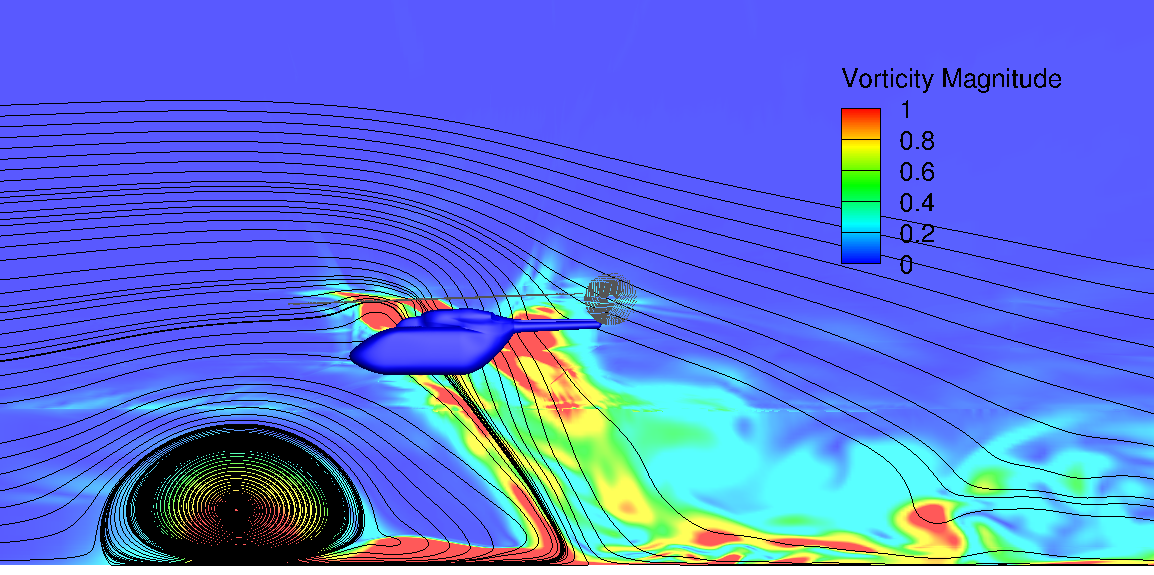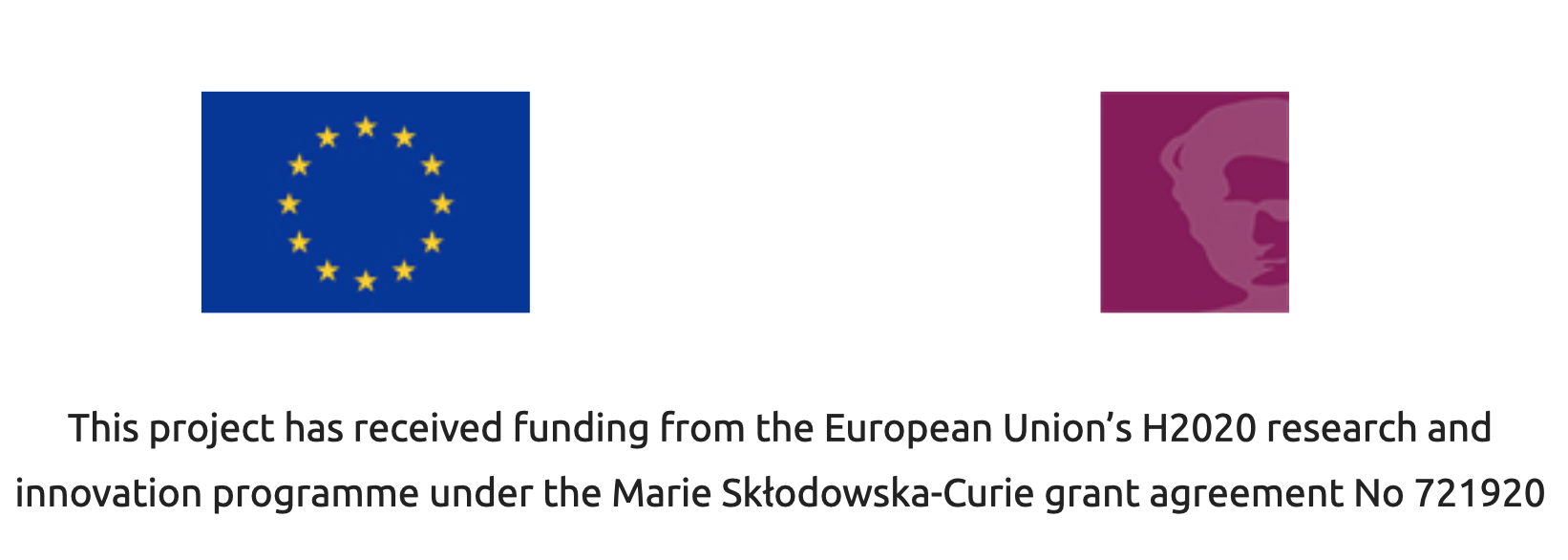Wake Modelling for Rotary Wings
Helicopters support a broad range of services (as search and rescue, coastguard, firefighting etc.) and adverse environmental conditions can play a crucial role in the safety of their operations with a significant number of accidents ascribed to the hazardous working environment[1]. As a result, wake encounters and rotor wake/obstacle interactions have become a challenging research topic in the last few years.

Vorticity magnitude contour from 1 to 5 rotor diameter downstream the helicopter hub of a Puma helicopter at a forward speed of 70 kts (in this simulation a non uniform steady actuator disk model has been employed).
Today, there are clear separation criteria between fixed wing aircraft, while the situation for helicopters is different, and separation criteria have not been fully established yet. Some guidance can be found for particular situations [2], however, more detailed guidelines are needed. The increase of air traffic in the recent years makes these separation standards a limiting factor for capacity at the busiest airports. A solution to airport congestion is thus to reduce, when possible, separation minima, keeping at least the current safety level.

Vorticity magnitude contour at the simmetry plane of a EC145 at 20 kts of forward speed (in this simulation a non uniform unsteady actuator disk model has been employed).
This research aims to provide accurate and safe separation criteria between a leading helicopter and different classes of following aircraft. For this, CFD is used to generate and analyse wakes. Detailed simulations on structured and adapted Cartesian grids are used to reduce the numerical dissipation of CFD schemes.
Publications
- S. Cavallo, G. Ducci, R. Steijl, G. N. Barakos, "CFD Analysis of Helicopters Wake in Ground Effect", 2018 September 18-21, 44th European Rotorcraft Forum, Delft, Netherlands
- Jimenez-Garcia, A., Barakos, G., Treve, V., Rooseleer, F., Cappellazzo, V., and Graham, R., “Helicopter Wake Encounters in the Context of RECAT-EU,” 2017
- Sugiura, M., Tanabe, Y., Sugawara, H., Barakos, G. N., Matayoshi, N., and Ishii, H., “Validation of CFD Codes for the Helicopter Wake in Ground Effect,” 2017.
Contacts
G. Barakos (Professor), George.Barakos@glasgow.ac.uk
S. Cavallo (Phd student), stefano.cavallo@glasgow.ac.uk
References
- “Aviation Accident Reports - National Transportation Safety Board.” https://ntsb.gov/investigations/AccidentReports/Pages/AccidentReports.aspx
- CAA, “CAP 490: Manual of Air Traffic Services Part 1,” 2015.




